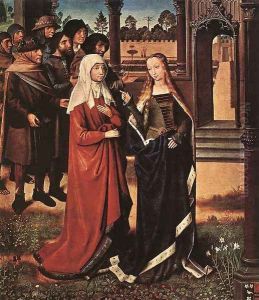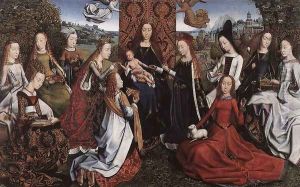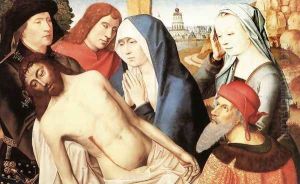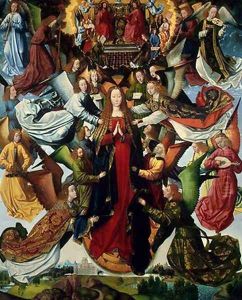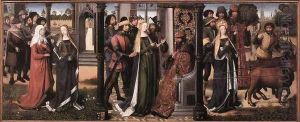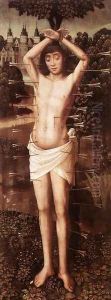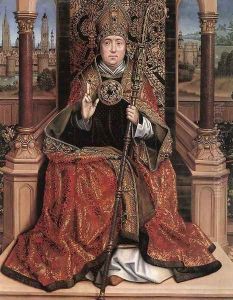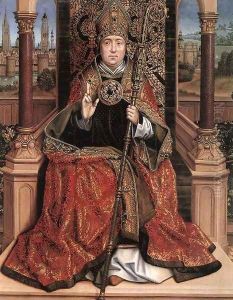Master of the Saint Lucy Legend Paintings
The Master of the Saint Lucy Legend was a Netherlandish painter who was active in Bruges from about 1480 until the early 1500s. His name, like those of many artists of the time, is pseudonymous, derived from his most famous work, the 'Saint Lucy Legend' triptych, which is now in the National Gallery of Art in Washington, D.C. The actual name of the Master of the Saint Lucy Legend remains unknown, and his oeuvre has been constructed based on stylistic similarities between a number of paintings attributed to this hand. The identification of a single individual behind these works remains a matter of art historical investigation and debate.
The Master of the Saint Lucy Legend was clearly influenced by the major trends of the Flemish Renaissance, especially the detailed and naturalistic style of Hans Memling, who was also active in Bruges during the second half of the 15th century. The Master's work is characterized by a high degree of realism and attention to detail, with a particular focus on the rendering of textiles and the interplay of light and shadow. His compositions often exhibit serene and contemplative figures, imbued with a sense of devotional calm.
Although the Master of the Saint Lucy Legend's career and life are shrouded in mystery, his surviving works suggest that he was a painter of considerable skill and sensitivity. His paintings, mostly religious in nature, reflect the devotional practices and preferences of the time, including altarpieces, devotional diptychs, and triptychs. The 'Saint Lucy Legend' triptych, for example, is a complex narrative work that depicts various episodes from the life of Saint Lucy, a popular saint during the Middle Ages.
Despite the lack of concrete biographical information, the Master of the Saint Lucy Legend is recognized as an important figure in the history of Netherlandish painting. His works continue to be studied and appreciated for their contribution to the development of Northern Renaissance art. The exact date of his death is unknown, and his artistic legacy is assessed through the body of work he left behind, which continues to resonate with viewers for its beauty and devotional power.
